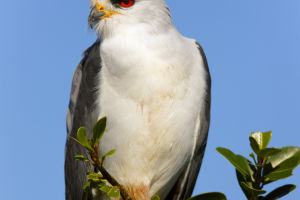Owls are a common bird of prey found all over the world, and they are widely considered to be the rulers of the night. This bird usually has a large, round head with two large eyes, a strong beak, and sharp claws.
There are many species of owls that vary in size, colour, and habits. Most owls are carnivorous, feeding on small mammals, birds, and reptiles.
They usually hunt at night, using their powerful eyesight and hearing to catch their prey. Owls also have excellent flying skills, being able to stand still or hover in the air before swooping down on their prey with amazing speed and accuracy.
Owls have different symbolic meanings in different cultures. In some cultures, they are seen as symbols of wisdom, enlightenment, and mystery, and are also used to symbolize death and darkness. In other cultures, they are seen as symbols of good luck and worshipped as guardian deities.
Overall, owls are fascinating creatures that amaze me with their enigmatic appearance and unique habits.
The hunting methods of owls are very diverse, with high adaptability and flexibility. Here are some common hunting methods:
Flying and catching: When the owl finds its prey in flight, it will swoop down rapidly and grab the prey with its sharp talons. This hunting method requires superb flying skills and reaction speed.
Perch ambush: Owls usually wait on tree branches or rocks for their prey to emerge, then grab them with their sharp talons.
Ground Hunting: Some owls will hunt prey on the ground, including snakes, mice, rabbits, etc. They grab their prey with their sharp claws and stun them with their beaks.
Sea hunting: Some owl species can catch fish and other sea life in the ocean, grabbing their prey with their sharp talons and bringing it back to their nest or roost.
In general, the hunting methods of owls are very diverse, and they can adapt to various environments and prey types, ensuring their survival and reproduction.
Here are some interesting facts about owls:
1. Owls are the only birds that can see blue because of a special pigment in their eyes.
2. Owls can twist their heads to observe the surrounding environment, and their necks are very flexible and can rotate 270 degrees.
3. Owls are very quiet raptor birds, they can fly without making a sound, which helps them get closer to their prey more easily.
4. Owls have very sharp claws, which can catch prey in flight. They have special bumps on their claws that keep prey from slipping off.
5. Owls have very large eyes, most owls have eyes larger than their brains. Their eyesight is very sharp and they can see fine details in very low light.
6. The owl can sleep in flight, just close one eye, and the other eye continues to observe the surrounding environment.
7. The hooting of owls is very special, and the hooting of each species is different. Their calls can convey a lot of information, including their territory and mates.
8. Owls are very important ecological roles. They can help control the number of rodents and other pests and maintain ecological balance.


